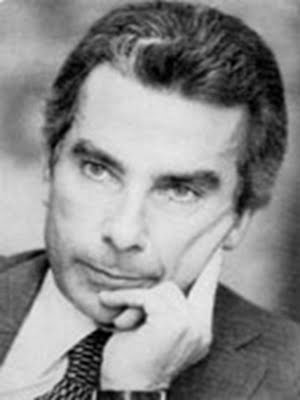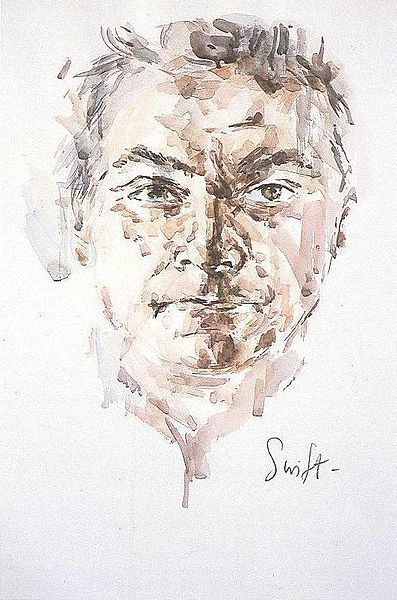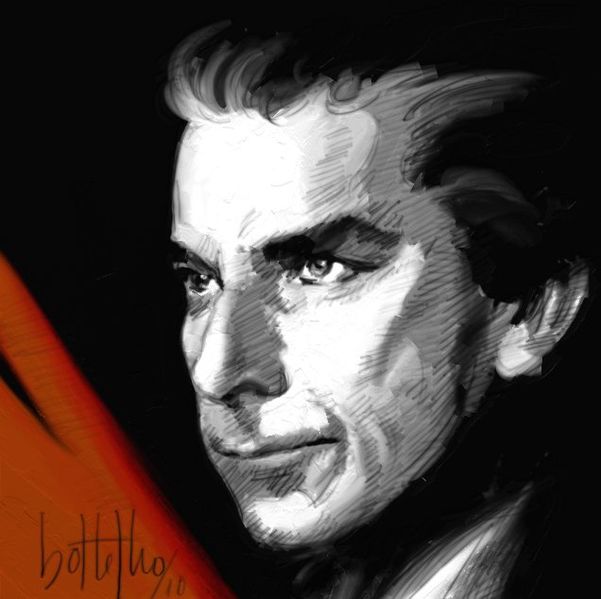<Back to Index>
- Philosopher Herbert Marcuse, 1898
- Painter John Martin, 1789
- Prime Minister of Portugal Francisco Manuel Lumbrales de Sá Carneiro, 1934
PAGE SPONSOR


Francisco Manuel Lumbrales de Sá Carneiro (19 July 1934 – 4 December 1980). He founded the Social Democratic Party (Portugal) in 1974 (the year of the Portuguese Carnation Revolution) and was elected Prime Minister of Portugal in January 1980 but only held office for eleven months, dying in a plane crash with his partner, Snu Abecassis, on December 4, 1980. The accident triggered a number of conspiracy theories.
He was born in Porto, Vitória, the third of the five children of José Gualberto Chaves Marques de Sá Carneiro (b. Barcelos, 31 August 1897), a lawyer, and wife Maria Francisca Judite Pinto da Costa Leite (b. 29 March 1908), of the Counts of Lumbrales in Spain.
A lawyer by training, he became a member of the puppet National Assembly, where he became one of the leaders of the "Liberal Wing", which attempted to work for the gradual transformation of António de Oliveira Salazar's dictatorship into a normal Western European democracy.
In May 1974, a month after the Carnation Revolution, Sá Carneiro founded the Popular Democratic Party (PPD), together with Francisco Pinto Balsemão, Joaquim Magalhães Mota, Carlos Mota Pinto, João Bosco Mota Amaral, Alberto João Jardim, António Barbosa de Melo and António Marques Mendes, and became its secretary - general. The PPD was soon renamed the Social Democratic Party (PSD); despite Sá Carneiro's original claims to be leading a left - of - centre party, he and the party soon drifted to the right. He was minister without portfolio in a number of provisional governments, and was elected as a deputy to the Constitutional Assembly the next year.
In 1976, he was elected to the Assembly of the Republic. In November 1977, he resigned his office as president of the party, only to be reelected to that office the next year.
In the general election of late 1979, he led the Democratic Alliance, a coalition of his Social Democratic Party, the right - wing Democratic and Social Centre Party,
and two smaller parties, to victory. The Alliance polled 45.2 percent
of the popular vote and gained 128 of the 250 seats in the Assembly of the Republic; 75 of these were from the PSD. President António Ramalho Eanes subsequently called on him to form a government on 3 January 1980, and formed Portugal's first majority government since the Carnation Revolution of
1974. In a second general election held in October that year, the
Democratic Alliance increased its majority. The Alliance received 47.2
percent of the popular vote and 134 seats, 82 of them from the PSD.
Sá Carneiro's triumph appeared to augur well for the presidential election two months later, in which Sá Carneiro was supporting António Soares Carneiro (no relation). His victory was short lived, however. On 4 December 1980, while on his way to a presidential election rally in Porto, the Cessna 421 he was on crashed into a building in Camarate, Loures, soon after takeoff from Lisbon Airport. Eyewitnesses claimed they saw pieces falling from the plane just moments after it took off. Rumours have continued to fuel conspiracy theories that the crash was in fact an assassination,
but no firm evidence has come to light. There are even different
theories as to whom would have been the target of such an assasination,
as Francisco de Sá Carneiro was travelling with the Defence
Minister, Adelino Amaro da Costa, who had said he had documents relating to the October surprise conspiracy theory. Dependent
to a considerable extent on Sá Carneiro's personal popularity,
the Democratic Alliance was unable to maintain its momentum in the wake
of his death. Faced with a national crisis, the public rallied behind
the incumbent President, António Ramalho Eanes, who easily
defeated the Alliance candidate in the presidential election a few days
later. The airport where Sá Carneiro was heading has been named after him as Francisco de Sá Carneiro Airport, despite objections that it would be in bad taste to name an airport after someone who died in a plane crash. In
recent news, one former bodyguard has come forward and revealed that
there was a payment made for sabotaging the plane which resulted in the
Prime Minister's death. However, he refuses to reveal who the people
behind this are. In Portuguese law, after 25 years have passed and no
one has been found guilty of the crime in question, the person involved
can come forward without any repercussions. He was married to Isabel Maria Ferreira Nunes de Matos (b. Porto, Miragaia, 1 October, 1936), and had five children. Later in life he lived together with Snu Abecassis, who died in the same accident as Sá Carneiro. Sá Carneiro started his political life in the youth of the Acção Católica (the Portuguese Catholic Action), being his first activity in civic life to write a letter to Marcelo Caetano requesting the return of António VIII Ferreira Gomes, the exiled pro-democracy bishop of Oporto. He probably had links with the catholic syndicalist organizations and Christian Socialism in general. He was very influenced by catholic Personalism and Humanism (especially its Christian version). Sá Carneiro tried to adapt the social democratic ideas of the likes of Eduard Bernstein, Karl Kautsky, and the post 1945 SPD to the cultural context of Portugal and its traditionally catholic society. The Godesberg Program had a very important influence in his social democratic thought as it became the model for his party and its cut with marxist socialism. Despite having an anti - collectivist and anti - statist party with an emphasis on personal rights and duties and responsible for privatizing the industrial sectors nationalized during the revolutionary period, he increased social spending during his term, supported land reform and its redistribution in Alentejo and he was proud that his party had been adopted by the working, middle class blue collar worker and middle - low class workers and that his party defended «the construction of a socialist society in liberty». Due to all this specificities he called his party's ideology "Portuguese Social Democracy". He was recognized as populist by both supporters, neutral analysts, and opponents.

